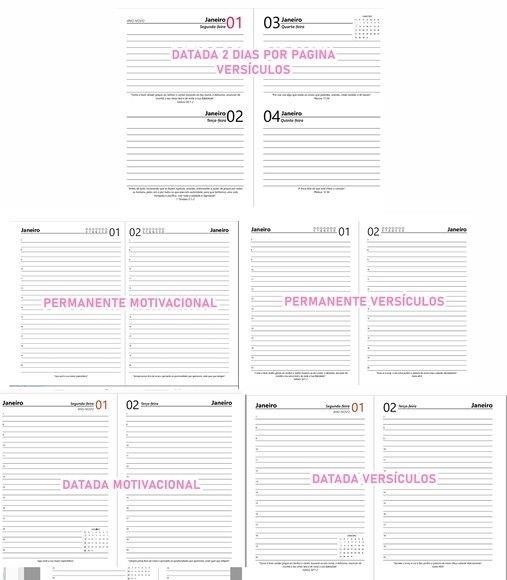never have i ever stephanie alves pdf

Never Have I Ever by Stephanie Alves⁚ A Comprehensive Guide
This guide explores Stephanie Alves’s “Never Have I Ever,” a captivating college romance novel. Discover its availability in various formats, including PDF and EPUB, delve into the plot, and examine the compelling character arcs of Rosalie and Grayson. Uncover its connection to the “Campus Games” series and explore critical reception.
Availability and Formats
Stephanie Alves’s “Never Have I Ever” is readily accessible in multiple formats, catering to diverse reader preferences. Digital versions are easily obtainable through online retailers such as Amazon Kindle, offering convenient downloads for e-readers and compatible devices. The book’s widespread availability extends to PDF and EPUB formats, ensuring compatibility with a broad range of reading applications and platforms. These readily accessible digital formats allow readers to enjoy “Never Have I Ever” on their preferred devices, whether it’s a tablet, smartphone, or computer. Furthermore, some online libraries and platforms may offer the book for borrowing or purchase, presenting additional avenues for accessing this popular college romance novel. The versatility in its availability makes “Never Have I Ever” easily accessible to a large audience.
Plot Summary and Main Characters
“Never Have I Ever,” the first book in Stephanie Alves’s “Campus Games” series, centers on Rosalie, a sheltered and inexperienced college student. Rosalie’s sheltered upbringing is dramatically challenged when she plays a game of “Never Have I Ever” at a college party, revealing a stark contrast between her life and the experiences of her peers. This revelation sparks a desire within Rosalie to explore new experiences and break free from her previously constrained lifestyle. The story follows Rosalie’s journey of self-discovery as she navigates the complexities of college life and embarks on a path of personal growth. A key figure in her transformation is Grayson, a captivating and enigmatic character who plays a significant role in shaping Rosalie’s experiences and personal development throughout the narrative. Their interactions form the core of the romantic tension and plot development within the novel.
Rosalie’s Transformation and Character Arc
Rosalie’s journey in “Never Have I Ever” is a central theme, showcasing a remarkable transformation from a sheltered, naive young woman to someone more confident and self-assured. Initially portrayed as a somewhat spoiled and sheltered rich girl, Rosalie’s sheltered upbringing becomes a significant obstacle in her college life. The pivotal “Never Have I Ever” game acts as a catalyst, exposing the gap between her experiences and those of her peers. This realization ignites a desire within her to break free from her comfortable, yet limiting, background. Throughout the novel, Rosalie confronts her inhibitions, challenges her preconceived notions, and actively seeks new experiences. This process of self-discovery involves overcoming internal conflicts and embracing vulnerability. Her interactions with Grayson, a significant character in the narrative, further contribute to her growth and development. Ultimately, Rosalie’s character arc demonstrates a powerful journey of self-acceptance and personal empowerment, leaving a lasting impact on the reader.
Grayson’s Role and Relationship with Rosalie
Grayson plays a crucial role in Rosalie’s transformation and the overall narrative of “Never Have I Ever.” He is presented as a captivating contrast to Rosalie’s sheltered background, embodying a more rebellious and experienced persona. Their relationship forms the central romantic core of the story, acting as a catalyst for Rosalie’s personal growth. Grayson’s influence on Rosalie is multifaceted; he challenges her preconceived notions, pushes her boundaries, and introduces her to new experiences that broaden her perspective. While their dynamic is complex, with moments of conflict and tension, their connection remains a driving force, propelling Rosalie’s journey of self-discovery. He isn’t simply a love interest; he serves as a guide, a confidant, and a significant factor in her evolution from innocence to independence. The nature of their relationship, including its complexities and challenges, contributes significantly to the overall emotional arc of the novel.
The “Campus Games” Series and its Connection
“Never Have I Ever” is the inaugural novel in Stephanie Alves’s “Campus Games” series, a collection of interconnected college romance stories. The series utilizes a recurring theme of college-aged characters engaging in various social games, each title drawing inspiration from a different game or activity. While each book features distinct storylines and protagonists, there’s a noticeable continuity in tone and themes, particularly the exploration of first-time experiences, personal growth, and the complexities of young adult relationships. The “Campus Games” series maintains a consistent focus on the dynamics of college life, friendships, and the rollercoaster of romantic entanglements. The interconnected nature of the series allows for character crossovers and recurring motifs, enriching the overall reading experience for fans. This interconnectedness invites readers to explore the wider world Alves has created within the university setting, providing a deeper understanding of the recurring themes and character developments across the series.
Critical Reception and Reviews
While comprehensive critical analysis of “Never Have I Ever” by Stephanie Alves may be limited in readily available sources, reader reviews suggest a generally positive reception. Many praise the novel’s engaging storyline, focusing on the relatable experiences of college life and the exploration of first loves. The “good girl meets bad boy” trope, a common theme in college romance, seems to be well-executed, creating a dynamic and appealing narrative. Positive comments frequently highlight the fast-paced plot, keeping readers invested in Rosalie’s journey of self-discovery and her evolving relationship with Grayson. However, some readers have noted that the plot might be predictable for those familiar with the genre’s conventions. Despite this, the overall feedback points towards a satisfying and enjoyable read, particularly for those seeking a lighthearted and steamy romance centered around the college experience. The book’s success is evident in its popularity and the anticipation surrounding subsequent installments in the “Campus Games” series.
Where to Find the Book (Online Retailers)
Acquiring a copy of Stephanie Alves’s “Never Have I Ever” is readily achievable through various prominent online retailers. Amazon Kindle Store is a primary source, offering the ebook in its convenient Kindle format. This allows for easy reading on a multitude of devices, ensuring accessibility for a wide range of readers. The availability of the ebook on Amazon also indicates the novel’s popularity and widespread appeal within the digital marketplace. Further exploration might uncover the book on other ebook platforms like Kobo and Google Play Books, though confirmation requires direct searching on these sites. While physical copies might be less prevalent, depending on the retailer, checking major booksellers’ websites – such as Barnes & Noble or Books-A-Million – could reveal stock availability or options for pre-ordering. The online accessibility ensures that readers can conveniently purchase “Never Have I Ever” through their preferred digital platform or traditional bookstore channels.
Downloadable Formats (PDF, EPUB, etc.)
For those seeking digital convenience, “Never Have I Ever” by Stephanie Alves is available in multiple downloadable formats. The most commonly mentioned formats are EPUB and PDF, catering to a wide range of e-readers and software. EPUB, a widely supported format, allows for adaptability across various devices, maintaining optimal readability regardless of screen size. PDF, known for its preservation of formatting, guarantees a consistent reading experience mirroring the original layout. The availability of these formats broadens access to the book, ensuring readers can enjoy it on their preferred devices, be it a dedicated e-reader, tablet, or computer. While other formats might exist, EPUB and PDF are the most frequently cited, suggesting a strong focus on providing the novel in widely accessible digital versions. This digital accessibility enhances the novel’s reach, particularly beneficial for readers who prefer or solely utilize digital reading platforms. Checking online retailers directly will confirm currently available formats.
Comparison to Similar College Romance Novels

While “Never Have I Ever” shares the college romance genre with numerous other novels, its unique elements set it apart. Unlike some overly dramatic or predictable storylines, Alves’s work often receives praise for its relatable characters and realistic portrayal of college life. The “good girl/bad boy” trope, common in the genre, is handled with a nuanced approach, avoiding clichés. The focus on personal growth and exploration of first experiences offers a refreshing perspective compared to books fixated solely on romantic entanglements. Other college romances may prioritize intense conflicts or unrealistic plot devices, while “Never Have I Ever” emphasizes character development and emotional depth. This focus on realistic scenarios and character arcs allows for a more engaging and satisfying read. The inclusion of steamy scenes is present but integrated into the narrative, rather than dominating the storyline. The balance between romance, humor, and emotional vulnerability differentiates it from works focusing heavily on explicit content or superficial relationships.
Themes Explored in the Novel
Stephanie Alves’s “Never Have I Ever” delves into several key themes relevant to young adulthood. The exploration of self-discovery is central, as Rosalie confronts her sheltered upbringing and embarks on a journey of personal growth. The novel subtly examines societal pressures and expectations, particularly concerning virginity and female sexuality. Rosalie’s experiences challenge conventional norms and encourage readers to question societal standards. The importance of healthy relationships and communication is another prominent theme. The dynamic between Rosalie and Grayson highlights the complexities of navigating romance, intimacy, and trust. Furthermore, the book touches upon the challenges and triumphs of transitioning from adolescence to adulthood, encompassing themes of independence, responsibility, and self-acceptance. The pursuit of personal fulfillment beyond societal expectations is interwoven throughout Rosalie’s arc, showcasing the importance of defining one’s own path.
Author Stephanie Alves and Her Other Works
Stephanie Alves, the author of “Never Have I Ever,” is recognized for her contemporary romance novels, often described as “smutty.” While details about her personal life remain relatively private, her writing reveals a keen understanding of young adult relationships and experiences. “Never Have I Ever” is the first book in the “Campus Games” series, suggesting a planned continuation of interconnected stories within the same college setting. The series’ titles, hinting at games and dares, imply a focus on the playful yet intense dynamics of college romance. Alves’s writing style is characterized by its engaging narratives and relatable characters, making her books popular among readers who enjoy contemporary romance. Further information regarding other works by Alves can be found through online booksellers and author platforms. Her focus on realistic portrayals of relationships and exploration of youthful self-discovery is a recurring theme that attracts a wide readership.
